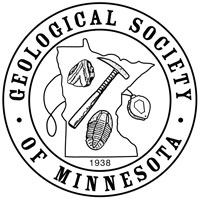Seminar Lab Date:
Seminar Lab presenter:
Seminar Lab Subject:
Seminar Lab Location :
A recording of this lecture is available on the Geological Society of Minnesota YouTube channel here: https://www.youtube.com/watch?v=0y3NHiN9zfE .
Seminar Lab Details:
Summary: Minnesota's iron-rich rocks preserve geochemical information about what seawater was like billions of years ago. To interpret this record, however, we must peel back the layers of time by reading mineral reactions that occurred after the rock formed. High-spatial resolution geochemical tools allow us to measure the elemental and isotopic composition of single mineral phases, while preserving textural relationships. Preservation of cross-cutting relationships, micro-banding, grain size, shape, and cement volumes allow us to build a geochemical history of each sample, where we can separate out secondary changes to reveal primary compositions. Because these iron-rich rocks originally form through precipitation from seawater, their primary composition informs our interpretation of how oceans evolved over time, and what that might mean for early life.
Bio: Dr. Latisha Brengman is an Assistant Professor at the University of Minnesota Duluth and runs the Precambrian processes lab there. Brengman and her research team work to solve Precambrian problems at the intersection of sedimentary and hydrothermal processes, using tools that span the macro- to micro-scale. The team’s main research projects focus on deciphering the record after sedimentary rocks form in order to assess the preservation potential of primary geochemical signatures that link to ancient ocean chemistry. They specialize in high spatial resolution tools and methodologies that focus on sample preservation. For more information about her projects visit her research website: http://www.latishabrengman.com/
